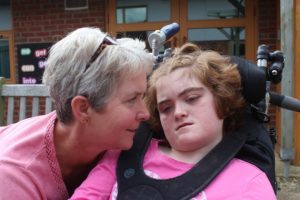Developing Shared Lives holidays and breaks
Shared Lives Carers
We are really pleased that we have been awarded Department of Health funding to develop a way of offering Shared Lives as holidays and breaks to people across local authority boundaries, in different areas of the country. There are Shared Lives carers who can provide short breaks living in seaside towns, national parks and in the heart of large cities.
Woman goes home from Yarmouth Hospital in wheelchair after six hour ambulance wait
A woman who suffers from multiple sclerosis went home from hospital in her wheelchair in the dark after a six hour wait for an ambulance.
Emily Dennis
Wednesday, April 18, 2012
3:45 PM
Because of her size Pauline Coulson required bariatric transport to get home from the James Paget University Hospital in Gorleston following a five day stay.
The 60-year-old has been bed-ridden for two years due to her condition and her husband Lindsay said his wife was left waiting for six hours for suitable transport to arrive.
Support for carers must be central to social care white paper
Government’s upcoming reforms must take the needs and contributions of unpaid carers into account
-
Heléna Herklots
- Guardian Professional,
We will all need care or provide care for loved ones at some point in our lives – it is an issue for all of society and all parts of government.
As care and support for older and disabled people rises up the political agenda, decision-makers and the public are confronted with an array of stark statistics on the rising demand for care – with the number of people over 80 to double by 2020, 11 million people alive today expected to live to 100, the number of adults with learning disabilities to rise by a third by 2030 and the number of carers by 50% in the next 25 years to 9 million.
But these statistics do little to shed light on what this care challenge means in practical terms or what solutions might look like. They also fail to truly reflect how demographic change is bringing about significant shifts in all of our lives – not just the lives of people using social care services.















